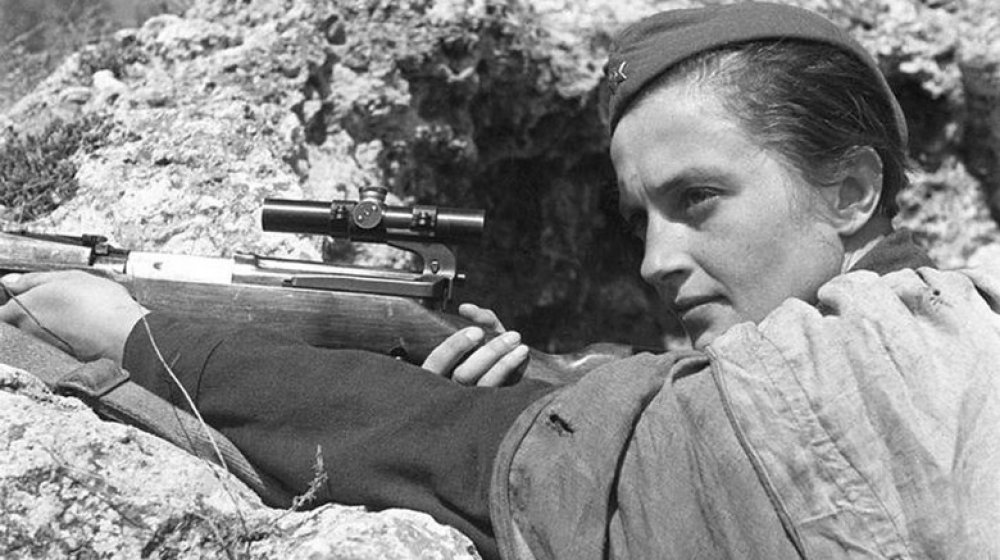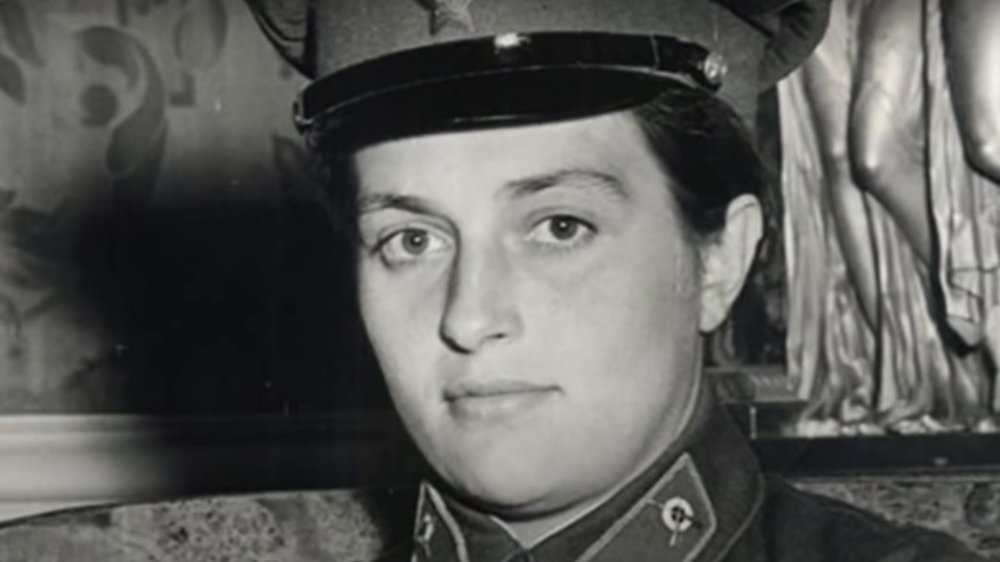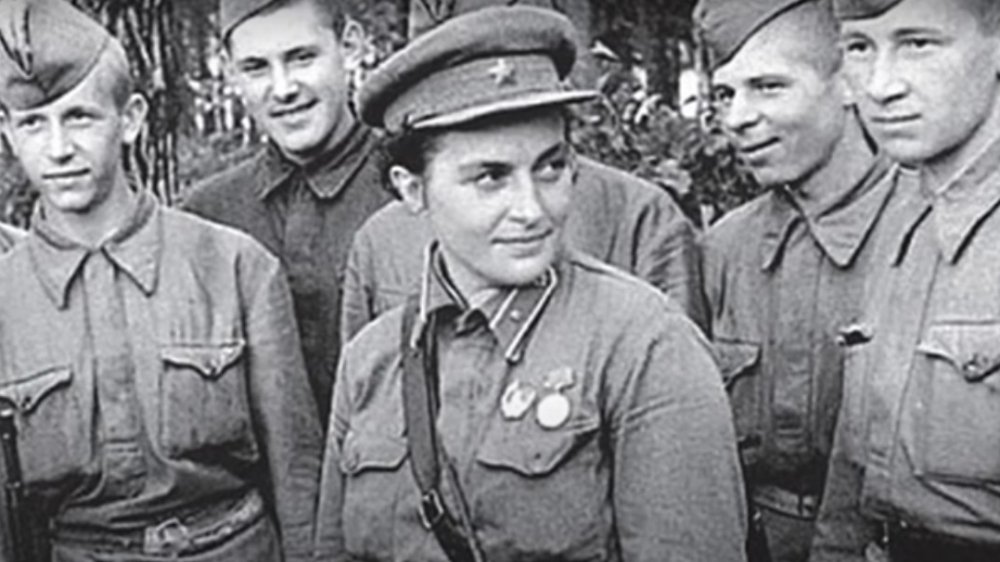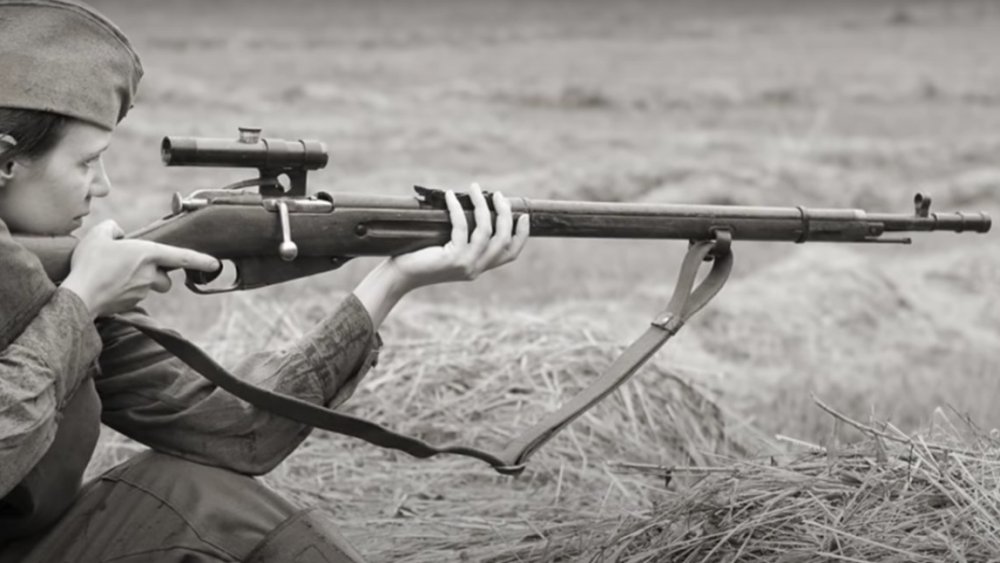What You Didn't Know About The World's Greatest Female Sniper
"So what did you do in the war?" I shot people. Quite a lot of people. In this case, German soldiers, invading their former ally, Russia on behalf of Hitler's Third Reich. "Every German who remains alive will kill women, children and old folks. Dead Germans are harmless. Therefore, if I kill a German, I am saving lives."
That's the rationalization of Lyudmila Pavlichenko, generally considered the world's most — "successful" doesn't seem quite right; maybe "effective" — sniper, who killed 309 Germans on the Eastern Front in the earlier days of World War II, defending Russian soil to the best of her abilities.
Born in 1916, she was always athletic and had taken up sharpshooting as a competitive hobby. She later took classes to sharpen her skills, and when the Germans invaded Russia in 1941 she presented herself as a valuable asset. The Russian Army wasn't having it — at first. "Be a nurse," they said, according to Mental Floss. She persisted — "I had to resort to all kinds of tricks to get in," says Smithsonian.
Pavlichenko became known as "Lady Death"
She finally convinced the army to give her an audition of sorts, and shot and killed two targets at a distance of a quarter of a mile, says Get Pocket. She got the job. Her first day, she was paired with a male sniper and found herself "paralyzed" by fear. A German bullet took her colleague — "such a nice, happy boy," she said — and after that, "nothing could stop me." Eventually she became known as "Lady Death." The Germans were keeping tabs on her and in time would use loudspeakers in an attempt to coax her over to their side, even offering her chocolate. (She didn't bite.) "We mowed down Hitlerites like ripe grain," she said.
The tool of her trade was a 7.62 mm Mosin-Nagant bolt-action rifle with a telescopic sight. The magazine held five rounds. And just so we're clear, that total of 309 confirmed kills is low, because those are the kills that were witnessed. As a sniper, Pavlichenko often worked alone, between the lines of the opposing armies.
She total includes 36 enemy snipers
At least 36 times she fought a one-on-one sniper duel with a German opponent — and triumphed. One such contest lasted three days, until "finally, he made one move too many."
She was brought to the United States in 1942 in an effort to drum up support for a second front (that wouldn't happen until later in the war), where reporters frequently asked ridiculous questions about makeup on the front lines — "who has time to think of her shiny nose when a battle is going on?" she replied — and The New York Times referred to her as a "Girl Sniper." No one seemed to notice that she had been wounded four times in combat. Her sartorial choices were criticized as well — her uniform made her look fat, said some. She told Time magazine, "I wear my uniform with honor. It has the Order of Lenin on it. It has been covered with blood in battle. It is plain to see that with American women what is important is whether they wear silk underwear under their uniforms. What the uniform stands for, they have yet to learn."
The work did not result in "complicated emotions"
According to History UK, she told a crowd in Chicago, "'Gentlemen. I am 25 years old and I have killed 309 fascist occupants by now. Don't you think, gentlemen, that you have been hiding behind my back for too long?" The crowd roared its approval.
Pavlechenko returned to her home country and was promoted to the rank of major. She trained other snipers and received Russia's highest military honor for her service. Of the 2,000 Red Army snipers who served, only 500 survived, says Business Insider. After the war she finished her education and became an historian for the Soviet Navy. She said she had no complicated emotions regarding her war work — "The only feeling I have is the great satisfaction a hunter feels who has killed a beast of prey" — but it's reported that she suffered from PTSD, depression, and alcohol dependency, all of which probably contributed to her death from a stroke at age 58 in 1974.



